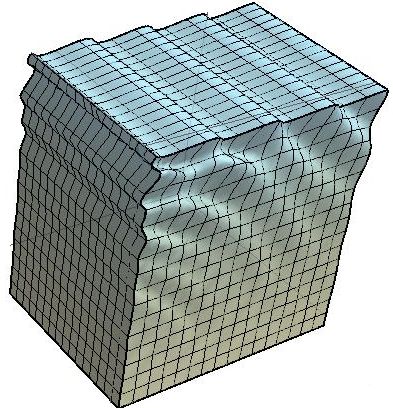Surface waves and instabilities

Summary
Most biological materials (and industrial) are reinforced with stiff fibres or are under tension. I figure out how these mechanisms influence elastic surface waves and the formation of surface wrinkles. The main reasons to do this are
- will give us greater control over surface waves or forming textured surfaces (using surface wrinkles).
- use these surface waves and surface wrinkles to measure biological materials.
Point impact on a surface
When an anisotropic solid is hit at one point, the solid will react by sending waves out in all directions. Because the solid is anisotropic, these waves travel at different speeds in different directions, which creates unique patterns.


The work I have done on plane surface waves can be used to predict the result of these point impacts, among other applications.